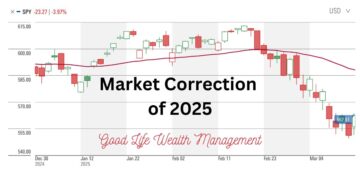We are launching a new portfolio model for 2018, Ultra Equity, a 100% stock allocation. Previously, our most aggressive allocation was 85% stocks and 15% bonds. This type of approach clearly is not for everyone, but if you want the highest possible long-term return and can ignore short-term volatility, Ultra Equity might make sense for you.
Bond yields remain very low today, and bond investors face rising risks, including interest rate risk, that rising interest rates depress bond prices, and purchasing power risk, that inflation eats up all your yield. While defaults have been quite low in recent years, as interest rates rise, it will be increasingly difficult for distressed companies, municipalities, and countries to meet their obligations. The level of debt globally has swelled enormously with the cheap access to capital since 2009, and yet the bond market is acting if all this debt hasn’t changed risks at all.
While the Federal Reserve raised the Fed Funds rate again this week, income investors have been disappointed that there are not more attractive opportunities in bonds today. Unfortunately, the rising rates have not benefited all types of fixed income vehicles equally. On the short end, yes, yields are up. We can now access short-term investment grade bonds with yields of around 1.5% to 2%.
However, the yields on longer bonds have barely moved. The 10-Year Treasury is at 2.35% and the 30-Year remains shockingly low at 2.71%. As a result, we have a “flattening” of the yield curve where short-term rates have increased, but long-term rates are virtually unchanged.
I expect this trend to continue in 2018: rising short-term rates and a flattening yield curve, which means there will continue to be a dearth of opportunities for yield-seeking investors. As a point of reference, the historical rate of return for intermediate bonds was 7.25%, but today, you can’t find anything at even half of that rate. We are always thinking about how we can position portfolio allocations to aim for the best possible return with the least amount of risk and the maximum amount of diversification. But at this point, bonds offer little potential for high returns. Instead, we have to think of bonds as risk mitigators, that the primary purpose of our bonds is to offset the risk we have with our equity holdings.
I’ve been reluctant to roll out a 100% equity allocation with the stock market at an all-time high in the US, because it risks falling into the behavioral trap of becoming too enamored with stocks during a bull market, and ignoring stocks’ volatility and potential for losses. For investors with a horizon of more than 10 or 20 years, there is little possibility that a bond allocation will increase your rate of return. If you are comfortable with ignoring volatility, I think some younger investors may want to invest 100% in equities.
Consider this: the expected return on intermediate bonds is only 3.5% over the next 10 or so years. If you have a 60/40 portfolio and earn 3.5% on your bonds, you will need to make at least 11% on your stocks to reach an overall return of 8%. Many investors are coming to the conclusion that to achieve their goals, the optimal allocation to bonds may be zero.
If you are making regular contributions to an equity allocation, you also have the opportunity to dollar cost average, and buy more shares at a lower price, if the market does drop at some point. And while dollar cost averaging does not guarantee you will not experience losses, it is nevertheless an effective way to accumulate equity assets and possibly benefit from any volatility that does occur.
Our Ultra Equity portfolio will differ from our other portfolio models in that we are not looking to reduce risk or to achieve the best “risk-adjusted” returns. Instead, we will invest tactically in areas where we believe there is the greatest potential for strong long-term rates of return. We will always be diversified, investing in ETFs and mutual funds with hundreds or thousands of different securities, but will have no requirement to hold any specific category of investments.
We cannot know how a portfolio like this will fare over the near term, and there will undoubtedly be times when the stock market is down, sometimes even down significantly. If your attitude is that those drops represent opportunity, rather than adversity, then you should ask us more about Ultra Equity to see if it might be right for you.







